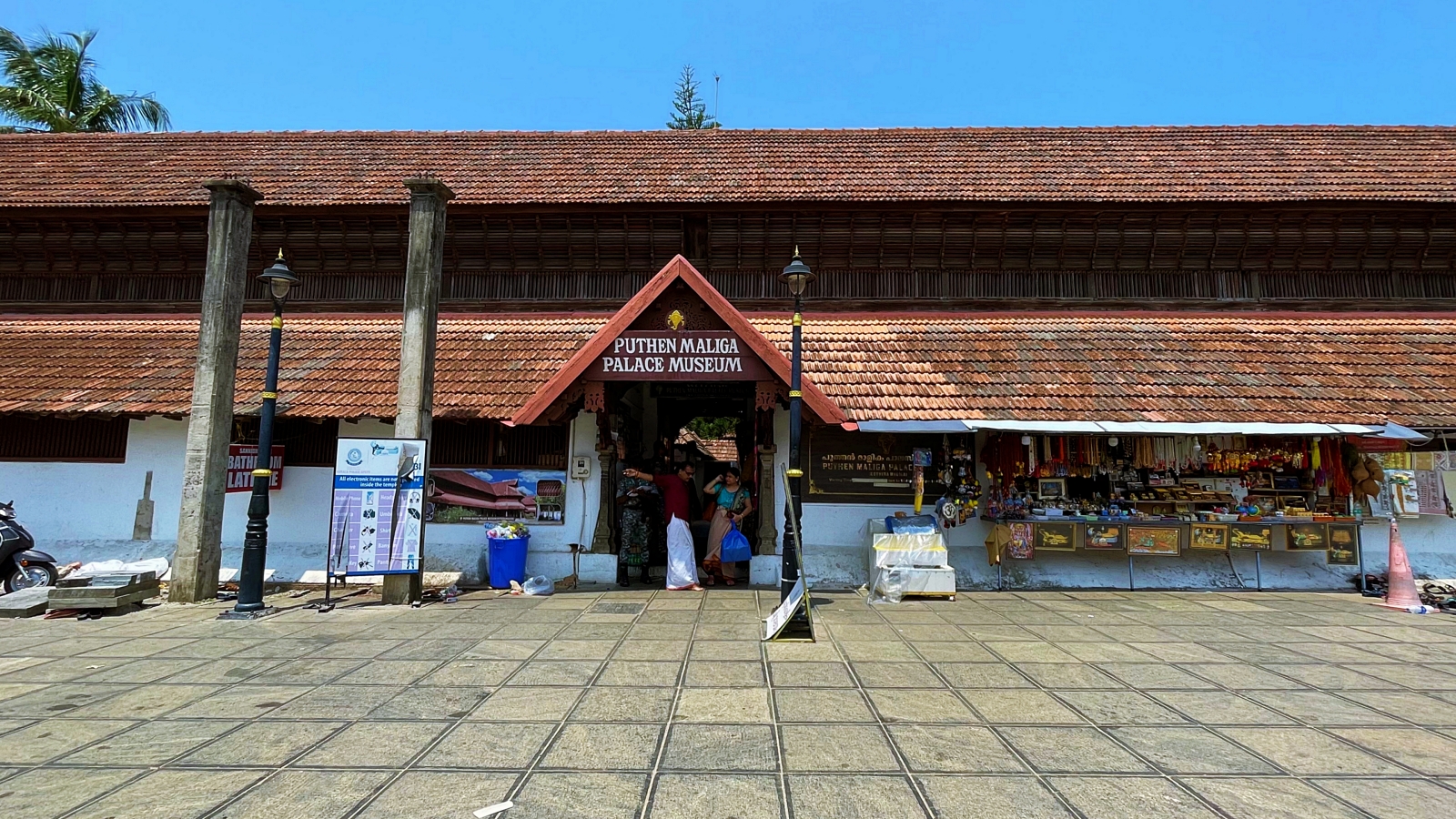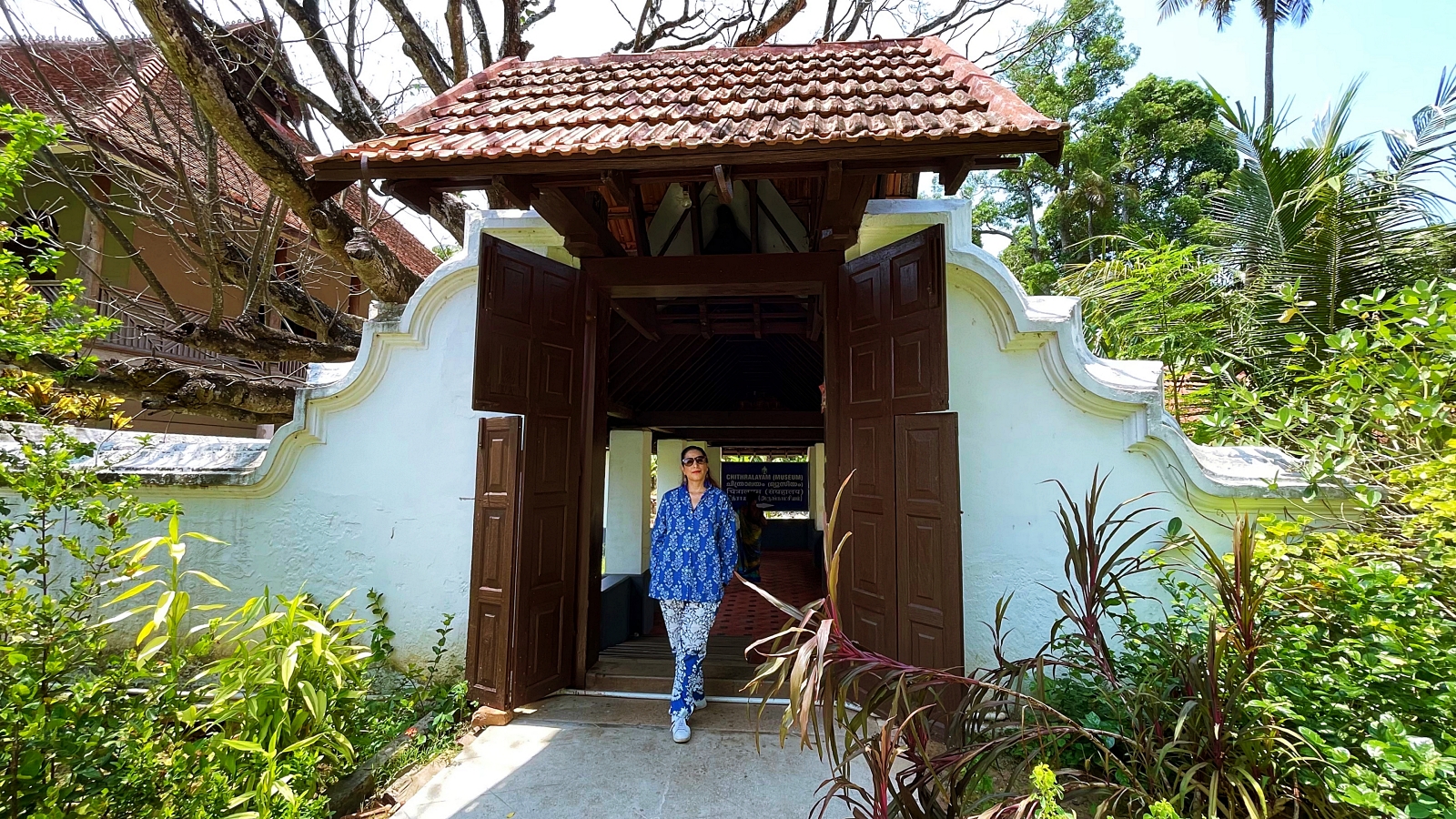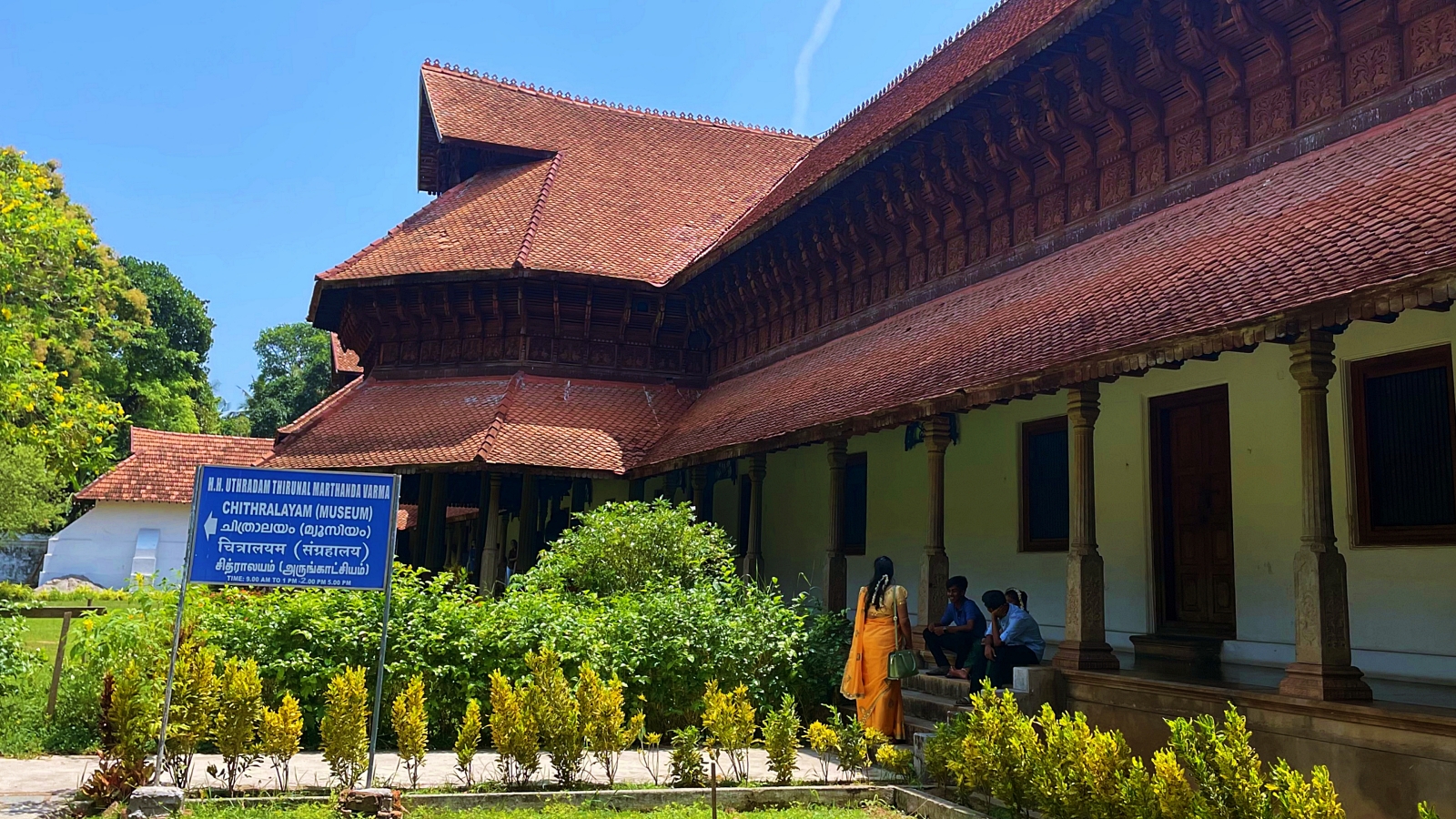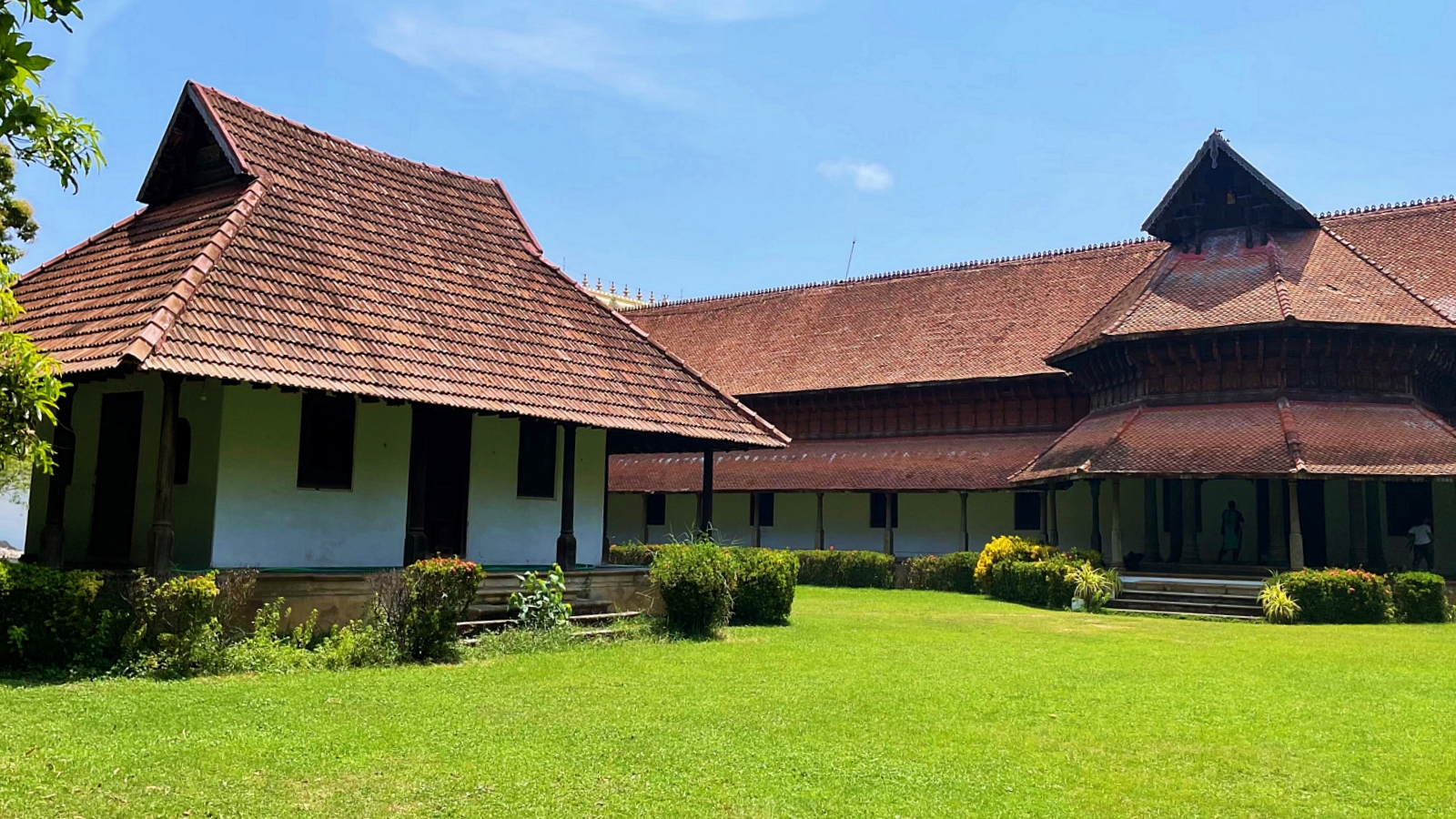Kuthiramalika Palace: From Horses to History
Adjacent to the magnificent Sree Padmanabhaswamy Temple in Trivandrum, there is a serene pond on one side and the majestic Kuthiramalika Palace on the other. The palace, also called the horse mansion, boasts an impressive array of 122 wooden horses, intricately carved into the wall brackets that uphold the southern roof. Trust me, you will be unable to resist staring at this stunning spectacle when you visit the temple. Also referred to as Puthen Malika, this grandiose palace, spanning two stories, was crafted in the 1840s by none other than the illustrious Maharaja of the Kingdom of Travancore in British India, Swathi Thirunal Balarama Varma.

Known as the New Mansion, this opulent abode is a true testament to the Maharaja’s impeccable taste and unwavering commitment to luxury. One can only imagine the extravagant gatherings that took place within these walls. It’s no wonder this palace remains a beloved landmark to this day. Experience the magnificence of the Kerala School of Architecture through this stunning masterpiece. Its sloping roofs, overhanging eaves, pillared verandahs, and enclosed courtyards made of the finest teakwood, rosewood, marble, and granite are a true testament to the grandeur of the 1840s.

It’s like travelling back in time to a bygone era of opulence and elegance. Rest assured, this gem has been preserved with the utmost care, allowing you to bask in its splendour. As we strolled along, Pragith from the Hyatt Regency shared a captivating nugget of information with me. Apparently, the renowned musical maestro Swathi Thirunal Balarama Varma used to gaze upon the grand Sree Padmanaswamy temple every morning to draw inspiration for his compositions. But alas, after Swathi Thirunal’s demise in 1846, the house was left abandoned for over a century.

What a travesty that such a legendary dwelling was left to rot in obscurity for so long. It’s a good thing we’re here now to appreciate its magnificence. This beauty is just one piece of the royal puzzle that makes up the Padmanabhaswamy Temple complex. Built back in the 1840s, this palace is a prime example of traditional Kerala architecture. The wooden ceilings are adorned with intricate carvings, each room boasting its own unique pattern. And get this – it took a whopping 5000 Vishwakarma four years to complete the construction of this palace.

The roof is a masterpiece in itself, made entirely of wood and supported by a whopping 42 beams. And let’s not forget about those granite pillars holding everything up. Oh, and did we mention the floral motifs that dot the verandah ceiling? The main 16 rooms of the palace were constructed in 16 different patterns. And that’s just the beginning – the palace boasts a total of 80 rooms, with 20 of them being opened for visitors back in 1995. But let’s talk about the flooring for a second.
It’s made of egg whites, charcoal, and limestone – a combination that keeps it cool and smooth even in the hottest of weather conditions. And if you’re lucky enough to attend a concert at the palace, you’ll be treated to some traditional sound reflectors. These aren’t your average reflectors, though – they’re fifty clay pots hung upside down from the ceiling. Who knew clay pots could be so useful? Overall, this palace is a true masterpiece – from its unique room patterns to its innovative flooring and sound reflectors.
Table of Contents
Palace Museum
A mere fraction of the illustrious Kuthiramalika has been transformed into a Palace Museum, showcasing the opulent belongings of the esteemed Travancore Royal Family. Only a measly 20 out of the grand palace are open for your perusal. You’ll be astonished as you lay your eyes on white marble idols and sculptures and two royal thrones – one crafted from 24 elephant tusks (Dantasimhasana) and the other made of Bohemian crystal, adorned with the Travancore emblem conch atop the backrest. The palace collection has got it all – from 14 life-size Kathakali mannequins to Belgian and Italian mirrors that will make you question your reflection.
And paintings that will transport you to another world, a giant Belgian harpoon that will make you feel like a true adventurer and armaments that will make you feel like a warrior. And for all you music lovers out there, they’ve got traditional instruments that will make your heart sing. But the real showstopper? The musical tree produces eight different sounds on tap. It’s like having your orchestra right at your fingertips. And don’t even get us started on the ivory cradles of various sizes that will make you want to curl up and take a nap like a true royal.
On the first floor, history and art collide in a symphony of elegance and beauty. Once upon a time, these rooms served as the audience chamber, library, and meditation alcove for the legendary Swathi Thirunal. It was here that he conceived many of his famous musical compositions, and you can almost feel the creative energy pulsing through the walls. The view from this floor is simply breathtaking. You can gaze out at the Padmanabhaswamy temple in Gopuram, taking in the majesty of its architecture and the spiritual significance it holds for so many. The small wooden stair is adorned with intricate carvings of peacocks, elephants, and dragons.
As you look up, you’ll notice the ceiling adorned with stunning paintings of parrots, peacocks, and elephants. It’s like being transported to a magical jungle, where every creature is a work of art. But the pièce de résistance has to be the illusion portrait of Sree Chithira Thirunal Balarama Varma, painted by the one and only Svetoslav Roerich. The king’s face and shoes seem to follow you wherever you go in the room like a mischievous ghost playing hide-and-seek. It’s like stepping into a world of royalty where history and art come to life before your very eyes. Just be warned, no sneaky pictures or videos are allowed within the museum premises.
Swathi Sangeethotsavam
At the Kuthiramalika courtyard, Swathi Sangeethotsavam (aka the Kuthiramalika Festival) takes place every year from January 6th to 12th. This musical extravaganza is a tribute to the legendary Swathi Thirunal and attracts the crème de la crème of Carnatic and Hindustani classical music. We’re talking about the likes of Bismillah Khan, Kishori Amonkar, M. Balamuralikrishna, D. K. Pattammal, and Gangubai Hangal, who have graced this stage with their soulful melodies in the past. So, if you’re a music lover, mark your calendars and get ready to be transported to a world of pure bliss. Trust us; you don’t want to miss this musical feast.



